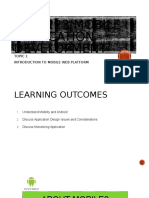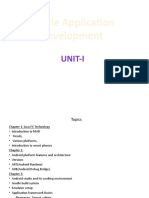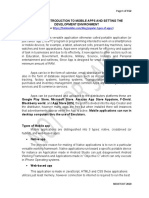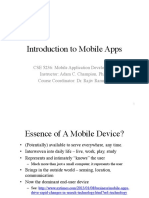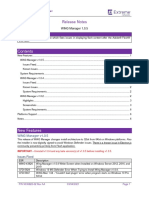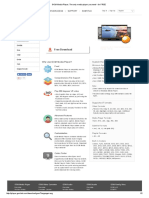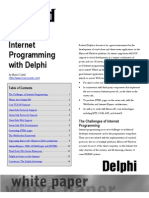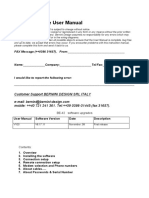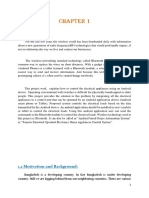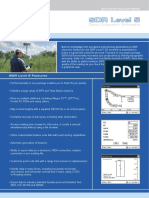0% found this document useful (0 votes)
41 views13 pagesLecture 01 - Introduction
The document provides an introduction to mobile application design and development, outlining key learning outcomes and the evolution of mobile applications across different generations. It discusses the characteristics of major mobile platforms, specifically iOS and Android, and highlights the role of design in development, including UI, UX, and accessibility. Additionally, it addresses current trends in mobile application development such as cross-platform technologies, AI, AR/VR, and IoT.
Uploaded by
ShahinCopyright
© © All Rights Reserved
We take content rights seriously. If you suspect this is your content, claim it here.
Available Formats
Download as PDF, TXT or read online on Scribd
0% found this document useful (0 votes)
41 views13 pagesLecture 01 - Introduction
The document provides an introduction to mobile application design and development, outlining key learning outcomes and the evolution of mobile applications across different generations. It discusses the characteristics of major mobile platforms, specifically iOS and Android, and highlights the role of design in development, including UI, UX, and accessibility. Additionally, it addresses current trends in mobile application development such as cross-platform technologies, AI, AR/VR, and IoT.
Uploaded by
ShahinCopyright
© © All Rights Reserved
We take content rights seriously. If you suspect this is your content, claim it here.
Available Formats
Download as PDF, TXT or read online on Scribd
/ 13
